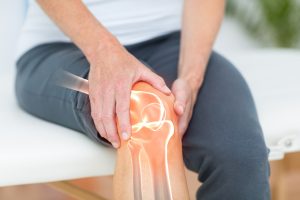 When we think about what our bodies should expect with aging, it is common to anticipate a decline in joint health due to the stresses of our lives. We all grew up hearing older family members talking about how they had trouble moving about because of their knees or maybe that they were sensitive to changes in the weather.
When we think about what our bodies should expect with aging, it is common to anticipate a decline in joint health due to the stresses of our lives. We all grew up hearing older family members talking about how they had trouble moving about because of their knees or maybe that they were sensitive to changes in the weather.
As the body grows older, the cartilage in the joints naturally breaks down. For many people, this can result in partial or complete knee replacements by the time they have reached their sixties, if not younger depending on the amount of damage done and when it occurred.
While there are many factors in life that are hard to control, there are some things we can do to help maintain the health of the joints. Below are some tips to help your knee joints healthy:
Weight Maintenance
No one will deny that weight maintenance proves to be more challenging as the years roll on. Hormone levels change and keeping lean mass proves to be increasingly difficult.
As weight increases, whether it is fat or added muscle, it is important to understand the stress that this places on the joints. In older individuals, in particular, most weight gain is centered around the pelvic area with the knees taking the brunt of this additional pressure.
The additional weight can compress the space in the knee joint, causing additional stress on the cartilage on top of the normal stress that occurs with activity. This added weight will then make it more challenging to perform physical activity due to painful complications at the knee joint, leading on to a vicious cycle.
The best way to combat this is to start living a healthy, active lifestyle early on in life. This should include regular cardio, weight training, and eating meals of healthy portions that are well balanced. This will prevent the onset of extra weight gain, providing your knees with normal levels of stress they are built to handle.
Being Mindful of Physical Activity
While many people look forward to their daily run, it is important to understand the amount of stress that prolonged impact forces, such as those associated with running, can put on the knee joints. This is even more intense when mechanics are faulty.
In order to combat these effects, it is recommended to supplement running with a mix of low-impact cardiovascular exercises a few days a week. This may include both swimming and cycling as both take away the ground impact forces that often damage cartilage.
Additionally, weightlifting should be modified with age to reduce the amount of stress placed on your joints. Lifting heavy loads through exercises such as the back squat can stress the knee joints due to the shearing forces that occur through anterior translation. Opting for lighter weights that are more form specific will help keep your knee joints healthy.
Strengthen the Knee as a Whole
While it is common to think of the knee only in terms of quads and hamstrings, it is important to understand that the knee is a complex joint with surrounding musculature, tendons, and ligaments. It is important to strengthen all of these muscles through motions such as flexion, extension, abduction, and adduction to stabilize the joint as a whole.
When the musculature around the knee is weak, the knee and its ligaments must take on more responsibility to stabilize during activity. If one is participating in sports that require cutting, jumping, landing, and changing direction, they may be much more likely to sustain a non-contact ligament or meniscus injury.
These injuries may require surgery and often take many months to fully recover. When they do happen, they are also much more likely to cause issues such as arthritis later in life. Engaging in a proper strength-training program prior to activity is the best way to limit injuries and complications such as these from happening.
In addition to strengthening the muscles around the knee, it is essential to maintain proper flexibility. This will allow for the muscles to be in an optimal position to support the knee through a full range of motion during activity. Limiting this range of motion may cause the knee joint to take additional stress in a certain compartment, potentially leading to a compromise in form and injury as a result.
When to Seek Help
Despite preventative efforts, joint pain remains a common complaint among Americans with an estimated 30% have reported experiencing some type of joint pain in the previous 30 days. Of those, knee pain accounted for nearly 20%.
In some cases, knee pain can be relieved through self-care such as rest, ice, compression, elevation and/or over-the-counter anti-inflammatory medications. However, if you are experiencing knee pain that was caused by a forceful impact, you should make an appointment with your doctor.
Other signs you should consult a physician includes knee pain that accompanied by significant swelling, redness, tenderness and warmth around the joint, significant pain and/or fever. What is considered significant pain can be subjective, but if pain interferes with your usual activities or sleep it is time to seek help.
At South Shore Orthopaedics, our providers have experience in diagnosing and treating a complete spectrum of knee issues through non-surgical orthopedic care, and when necessary, knee surgery. Our ultimate goal is to diagnose and treat orthopedic knee issues to achieve the shortest recovery time and the best outcome for our patients. To schedule an appointment, call (781) 337-5555.
